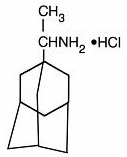第十章:藥物 - 金剛乙胺 (Rimantadine)
[
back ]
簡介
(綠色連結:
免費全文閱覽)
金剛乙胺(Rimantadine)是M 2離子通道抑制劑(M2
ion channel inhibitor),能干擾病毒的脫去外套殼的作用(uncoating
process),從而抑制流感甲病毒(influenza A)的自我複製能力。M 2抑制劑能堵塞在病毒壁膜中M
2蛋白離子通道(Hay
1985, Sugrue
1991)。基本上,流感病毒會透過受體介導的內吞作用(receptor-mediated
endocytosis)而進入寄主細胞(host cell),然後內吞泡囊(endocytotic
vesicles)進行酸化作用,將M 1蛋白由核糖核蛋白複合物(ribonucleoprotein
complexes)分離出來。之後核糖核蛋白物(ribonucleoprotein particles)才可透過核孔進入細胞核。當中酸化作用是要氫離子,氫離子就是透過M
2離子通道傳送。金剛乙胺(Rimantadine)正正能堵塞此離子通道(Bui
1996)。
金剛乙胺(Rimantadine)對於所有流感甲病毒亞群(influenza
A subtypes)有一定效用,如具致病性H1N1、H2N2及H3N2病毒。但對於流感乙病毒就不見其效,因為M
2蛋白在流感甲病毒是獨特的。金剛乙胺(Rimantadine)亦對近期導致人類染病的H5N1禽流感病毒也起不到作用(Li
2004)。
至於甲型流感的預防及治療方面,金剛乙胺(Rimantadine)及金剛胺Amantadine兩者效能差不多,但金剛乙胺(Rimantadine)較少機會引起不良反應(Stephenson
2001, Jefferson
2004)。
金剛乙胺(Rimantadine)基本上沒有影響抗體對流感毒株的中和作用,但對於鼻液中IgA數量有明顯減少(Clover
1991)。
近
期發表研究顯示,近十年受具抗amantadine及抗金剛乙胺(Rimantadine)性的H3N2病毒之感染個案不斷上升。報告指出,在1994-
2005年間,收集了全球7,000個甲型流感病毒樣本,而對amantadine及金剛乙胺(Rimantadine)出現抗藥反應的由0.4%升至
12.3%(Bright
2005)。
再者,由南韓、台灣、香港及中國所收集回來病毒樣本,當中的抗藥反應竟分別為15%、23%、70%及74%。最近,美國從病人身上抽取H3N2流感病毒
化驗,發現病毒中M
2蛋白的胺基酸31位置出現變異,而這位置就是產生對amantadine及金剛乙胺(Rimantadine)抗藥性。基於以上原因,美國疾病控制中心
建議在2005-06年度餘下的流感季節不要採用amantadine及金剛乙胺(Rimantadine)作治療及預防流感用途(CDC
2006)。
在很多國家,金剛乙胺(Rimantadine)已不再通用。
化學結構
金剛乙胺(Rimantadine)鹽酸是alpha-methyltricyclo-[3.3.1.1/3.7]decane-1-methanamine
hydrochloride,其分子重量為215.77及結構如下:

藥物代謝動力學
在健康成人中,當口服藥物後,大約6小時血液的濃度為最高。在成人(Hayden
1985)或兒童(Anderson
1987)中的藥物半衰期均為30小時。之後大部份藥物成份在肝臟進行代謝,只有少於25%劑量不受代謝改變而經小便排出。在老人中,藥物在體內消除所需時間較長,及其AUC值及血液最高濃度也高於健康成人20-30%。
在一般有慢性肝病之患者,其金剛乙胺(Rimantadine)藥物動力學是不會改變的(Wills
1987)。相反,有嚴重肝臟機能失調之患者,其AUC值及半衰期均會增加。
如腎臟機能失調,可導致血液中金剛乙胺(Rimantadine)代謝物濃度升高。血液透析也不能除去金剛乙胺(Rimantadine),故此對於末期腎病患者,金剛乙胺(Rimantadine)劑量必須減少。進行血液透析期間,也不用補充劑量(Capparelli
1988)。
毒性
胃
腸道徵狀是因服用金剛乙胺(Rimantadine)後最多出現的不良反應。在臨床試驗中,少於3%出現其他不良反應,如頭暈、嘔吐、厭食、口乾及中樞神
經徵狀(失眠、頭昏、神經緊張)。相反,參考在療養院長期服用金剛乙胺(Rimantadine)作預防之人士情況中,有關其安全性及效能性的研究,發現
基本上服用金剛乙胺(Rimantadine)沒有明顯帶來什麼胃腸道或中樞神經徵狀等不良反應(Monto
1995)。
還有一些較少見的不良徵狀(0.3 to 1%),如肚瀉、消化不良、不能集中精神、動作機能不協調、嗜睡、狂躁、抑鬱、出疹、耳鳴及氣喘。
對於一些有痙攣史又平日沒有服用止痙藥之人士,金剛乙胺(Rimantadine)有可能誘發其痙攣情況。當遇到類似情況,應立刻停止服用金剛乙胺(Rimantadine)。
一
般來說,以上所述不良反應多在停服金剛乙胺(Rimantadine)後消失。
有腎臟及肝臟失調之患者對金剛乙胺(Rimantadine)之安全性及藥物動力性,只有於單次劑數後評估的資料,因為腎臟及肝臟失調會導致金剛乙胺
(Rimantadine)及其代謝物積聚於血液內對該類病人施藥應特別小心。
現
在沒有一份較好有關孕婦與服用金剛乙胺(Rimantadine)之安全性研究,所以我們亦建議金剛乙胺(Rimantadine)不適合於孕婦服用。同
樣,金剛乙胺(Rimantadine)也不適合哺乳女士服用,因在老鼠實驗中,發現授母乳的小鼠體內有金剛乙胺(Rimantadine)成份。
在同一劑量的對比實驗中,金剛乙胺(Rimantadine)較amantadine為有耐藥性(Jefferson
2004)。直接比較兩種患者反應,發現因出現中樞神經不良反應而停用金剛乙胺(Rimantadine)或amantadine的,分?為6%及13%(Dolin
1982)。
效能性
金剛乙胺(Rimantadine)對於近期肆虐人類的H5N1禽流感病毒起不到活性作用(Li
2004)。
金剛乙胺(Rimantadine)較有效於預防及治療傳統人類常出現的甲型流感感染(H1N1, H2N2 and
H3N2)。金剛乙胺(Rimantadine)的效能性是可比得上金剛胺(amantadine)的。相反,在Cochrane評論複查3種安慰劑對照
測試下,發現金剛乙胺(Rimantadine)只能對流感個案及流感疑似個案起了緩和作用(Jefferson
2006)。在治療過程中,金剛乙胺(Rimantadine)能縮短發燒時間及緩和因甲型感冒而流鼻水之情況。但當流感結合了一些不良情況,金剛乙胺(Rimantadine)的效能會大大降低。筆者總結,
不鼓勵M 2離子通道抑制劑,包括金剛乙胺(Rimantadine)及金剛胺(amantadine),治療季節性及全球流行性感冒(Jefferson
2006)(看簡介中CDC建議)。
治療
在早期測試些感染非複雜性H3N2甲型流感之患者,用金剛乙胺(Rimantadine)治療(每日200毫克,為期5天)相對於接受安慰劑者可明顯減少了鼻液分泌物中病毒濃度、最高溫度、發燒時間(中位數,少過37小時)及全身徵狀(Hayden
1986)。使用金剛乙胺(Rimantadine)對住療養院中曾注射疫苗老人似乎頗為安全(Monto
1995)。就以上人士來說,劑量最好應低於每日100毫克。另外,對一般受感染成人進行測試,金剛乙胺(Rimantadine)不會影響鼻腔開通、黏液清隔、鼻腔徵狀及耳部併發症(Doyle
1998)。
預防
金剛乙胺(Rimantadine)的預防效能率變化很大。複查臨床研究,金剛乙胺(Rimantadine)的預防效率達64%,及明顯發燒時間縮短了1.27日(Demicheli
2000)。金剛乙胺(Rimantadine)對於兒童也可能有效(Clover
1986, Crawford
1988)。
抗藥性
當M基因出現突變後而致M2蛋白的氨基酸改變,很容易造成對金剛乙胺(Rimantadine)有高度抗藥性。這種突變了的病毒是和野生型一樣有毒性及容易傳播的侵襲性病毒,可引起典型流感感染。大約三份之一之患者出現抗藥性。免疫能力越差的患者,出現抗藥性越大(Englund
1998)。有些早發生的例子(H3N2)服用金剛乙胺(Rimantadine)之兒童或成人患者,兩天之後便能獲得具抗藥性甲型流感病毒(Hayden
1991)。
病毒傳播能力是使用金剛乙胺(Rimantadine)的一個重要決定。早期研究預防流感感染失敗的原因似乎是因有抗藥性病毒因子傳播。因此研究總結,金剛乙胺(Rimantadine)不能具有保護家居成員染甲型流感機會(Hayden
1989)。
在2003-2004年間,曾在東南亞肆虐人類的H5N1禽流感病毒,是對金剛乙胺(Rimantadine)具有抗藥反應(精氨酸殘留物在M2蛋白31位置)(Li
2004)。
近十年,對amantadine及金剛乙胺(Rimantadine)抗藥反應,由0.4%增至12.3%(Bright
2005)。
藥物相互作用
臨床上,沒有發現金剛乙胺(Rimantadine)對其他藥物有相關相互作用。Cimetidine可能有機會減低金剛乙胺(Rimantadine)的清隔率達18%(Holazo
1989)。Acetaminophen就可能減低金剛乙胺(Rimantadine)在血液濃度及AUC值為11%。Aspirin則可能減低金剛乙胺(Rimantadine)在血液濃度及AUC值為10%。
建議使用
在歐盟國家,含金剛乙胺(Rimantadine)的藥用產品已受國家認可(有關資料,請參考處方資料)。
在美國,金剛乙胺(Rimantadine)被列作給兒童及成人預防流感之用。但治療方面,只列作給成人使用。金剛乙胺(Rimantadine)
(Flumadine?)製成100毫克膠囊藥片及口服藥液劑型。
成人
在美國,建議預防及治療劑量為100毫克每日二次。
某些患者的使用劑量應減少至每日100毫克:
如患者有任何腎功能失調,應密切留意,或隨情況改變劑量。
治療方面,當出現甲型流感徵狀後,48小時內服用金剛乙胺(Rimantadine)。療程最好為發病後7天。
兒童
在美國,金剛乙胺(Rimantadine)只適用於預防用途。10歲以下兒童應按5毫克/公斤份量,及不能多於150毫克之份量。10歲或以上兒童可按成人份量服用。
警告
對於有癲癇症患者,服用金剛乙胺(Rimantadine)要更為小心注意。
總結
商標名稱:Flumadine®
藥物種類:M2 抑制劑
用法:預防(成人及兒童)及治療(成人)甲型流感感染。金剛乙胺(Rimantadine)治療方面,應出現徵狀後48小時內服用。
標準治療劑量:100毫克每日2次
對於嚴重肝臟機能失調、腎衰竭 (CrCl≤10毫升/分鐘)及在安老院之患者, 使用劑量應減少至每日100毫克。
標準預防劑量:100毫克每日2次
對於嚴重肝臟機能失調、腎衰竭
(CrCl?10毫升/分鐘)及在安老院之患者,使用劑量應少至每日100毫克。10?以下兒童應按5毫克/公斤份量,及不能多於150毫克之份量。
10?或以上兒童可按成人份量服用。
藥物動力學:當口服藥物後約6小時,藥物濃度在血液中達最高。藥物半衰期均為30小時。藥物在老人在體內消除時間較長。大部份藥物成份在肝臟進行代謝,只有少於25%劑量不變地經小便排出。而一些嚴重腎臟或肝臟失調患者,其藥物在血液中的濃度會上升。
相互作用:無明顯相互作用
副作用:胃腸道徵狀
|  留言列表
留言列表


 留言列表
留言列表
